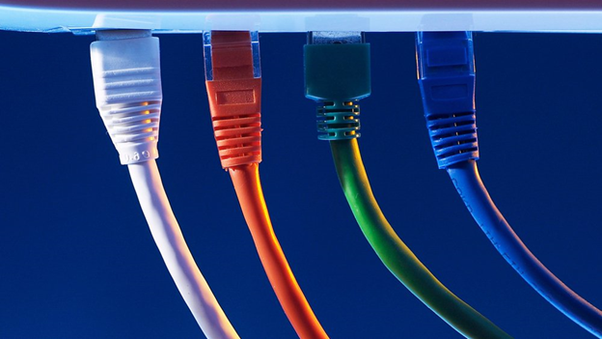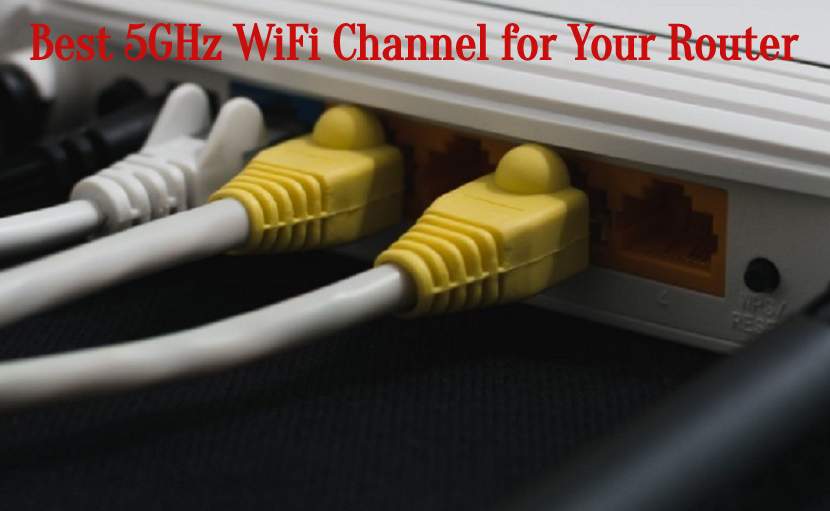The requirement of the internet is everywhere. Even when we wish to play our favorite games or try out something new, the advent of the internet in 2021 is huge. Even from completing a small task to achieving something new, you must take good care of high-speed data transmission to complete the work fast.
It always takes up time and effort to pull up internet access, allowing you to get the best results. Both ethernet and usage of wifi have become complementary to each other to reduce our time and effort. However, the working mechanism and the picture for ethernet and wifi are still not clear for many people.
This guide on everything you need to know about ethernet cable and wifi will help you to understand the relation with speed.
Is Ethernet Slower Than Wi-Fi?
There could be multiple versions of this but if you want to know the real answers– no, ethernet does not slow down your wifi speed. However, it is important to understand the situations you are talking about. In some cases, the usage of ethernet might be for heavy data usage at the same time.
For example, if you have multiple devices like four laptops connected through the same routing channel and with different ethernet cables, it will tend to split the usage of bandwidth. It will not reduce much speed unless you are consuming too much data while downloading files with all these four devices at the same time. In such a case, even using WiFi will not help you to gain easy internet access and configurations at all.
Pro Tip:
The usage of optical fiber in ethernet connections has become a must. It helps the ethernet to transmit a better range of bandwidth. Even with this, the optical fiber tends to lose some bandwidth because of the distance traveled from your ISP hub.
To regain this lost data package, you can easily take the help of purchasing a modem. Using a modem will stabilize the internet connection and will allow you to gain the original speed of data. It will now be converted to your router.
WiFi vs Ethernet: Differences
To obtain any connection, there are two main ways that you can follow up. It is either with your ethernet or with any wifi module. Probably, this is the major reason why many people are still confused about this situation and trying to figure out a solution.
The usage of both wifi and ethernet depicts how devices adapt themselves to get connected. Some devices do come with a wifi module. Configuring them with your router available at a home could be an easier solution. On the other hand, some devices do not have a wifi module. You can still get access to the internet with such devices. For such, it may be compatible with a LAN port or any ethernet plug-in port.
Ethernet helps to establish direct communication between the internet and devices. Thus, data loss is minimal and you can expect that it can generate a higher speed rather than simply using wifi. Ethernet makes a one-on-one configuration allowing you to get a complete data package set up for the device.
With the help of ethernet, you will be able to gain complete access to the data being transmitted by your internet service provider. Individually, it is the best possible option to configure when it comes to speed.
All You Need to Know About Ethernet
Ethernet basically stands out for wired communication between you and the service provider. It is the standard communication protocol that helps you to connect with devices. For local area networks, it is a key procedure to connect with devices. Having a proper ethernet connection means that you can access the internet on a particular device provided it comes with LAN settings. The common use of an ethernet cable is to get it configured to a wireless router so that every device in your home gets to be established with this. Having an Ethernet connection means you are bound to be secure and to gain complete access to the use of data transmission.
What are the Types of Ethernet?
The difference between the types of ethernet completely depends on the standard it applies and also the data rate this cable can provide. According to this, ethernet cables can be implemented into four different categories which are as follows:
- The regular ethernet cable comes with an IEEE standard of 802.3. Most homes today use this standard. It comes with a maximum transmission rate of 10 Mbps internet speed at a constant rate. Fast Ethernet is the standard base of all ethernet cables available. In most places, this type of cable is still used as a protocol and it provides you with the necessary bandwidth as per your needs. It can be ideal for some network-based video applications.
- The next type of ethernet cable is the faster ethernet cable. Today, most people playing games or watching HD movies would prefer to use such types of ethernet cables. It follows the 802.3u standard protocol and provides a maximum speed of 100 Mbps.
- Third-generation ethernet cables are much faster. This type of cable is known as Gigabit Ethernet. Here, the average speed you can get enters Gigabit or 1000 Mbps. It follows the 802.3z standard of internet protocols. Corporate houses tend to use this type of internet access to get maximum results. Installing a gigabit ethernet requires special types of cables. As a result, using optical fibers would be the ideal solution to use Gigabit ethernet. Transmitting such high-speed data will also heat the copper wires inside. Thus, optical fiber wire is used for better transmission.
- If you wish to own a hub that requires the highest capacity of speed, the fourth-generation ethernet cable is right for you. By far, it is the fastest to have when it comes to internet transmission. This type of ethernet cable can handle around 100 Gbps of internet speed. It follows the 802.3ae standard of IEEE.
- If you are willing to configure with multiple network devices on a LAN, you would have to take the help of switch ethernet. It is a network hub that creates a complete bus system of networks in a particular space. As a result, you will be able to use the ethernet wires for multiple works. The main function of a network switch is to transmit data either from one source to another. Using a switched ethernet simplifies the problems and allows you to complete the task efficiently. Because of this, you can get complete access controls to the devices and also make sure that it is working properly.
You may find this video helpful during the selection of Ethernet cable:
Pros & Cons of Using Ethernet
PROS
- Speed is much faster
- It establishes direct communications
- Does not share the internet with others
- No need to power on
CONS
- It must have a separate LAN port
All you Need to Know About WiFi
A Wifi connection is another type of communication that takes place between a device and the ISP. In this case, the communication established is wireless and it does not require any type of cables or geo boundaries. It comes with a built-in communicator that allows you to establish easy communication within these devices. It uses radio waves to establish communication between two devices. Short waves are used to allow the device to transmit data. Usually, to gain internet access, you need an ethernet cable to be attached to this device. Only then, you will be able to establish complete communication. Devices like TVs Laptops or even smartphones could make complete use of such wifi devices.
How do I Connect to WiFi at Home?
- To connect a Wi-Fi device available at home, you need to plug in the ethernet cable in the desired place. Power on the router!
- Turn on your PC or laptop and find the available devices. You will have to tap on the router name and then connect with it by entering the password.
- Now go to your local browser and type down your router IP address on the search bar. It will open the system control.
- Enter the SSID and password to set up your router. Once you enter your router, go to configuration and enter the IP address, DNS server, and also the gateway, and then click on save settings.
Pros & Cons of Using WiFi
PROS
- There is no limit to connections
- It has no wires to limit boundaries
- You can get wireless connectivity
- Security is much higher
CONS
- Multiple connections may reduce speed.
Conclusion
By now, you’ve already come to know that both ethernet and wifi are two essential components. Without ethernet, your WiFi router will be of no use at all. On the other hand, only using ethernet will limit your connectivity!
Speed becomes a different factor as ethernet does not reduce the speed of internet access. However, there might be some bandwidth loss due to the long distance of optical fibers being used. If you want to get rid of it, creating a dynamic access point could be the only possible option.




